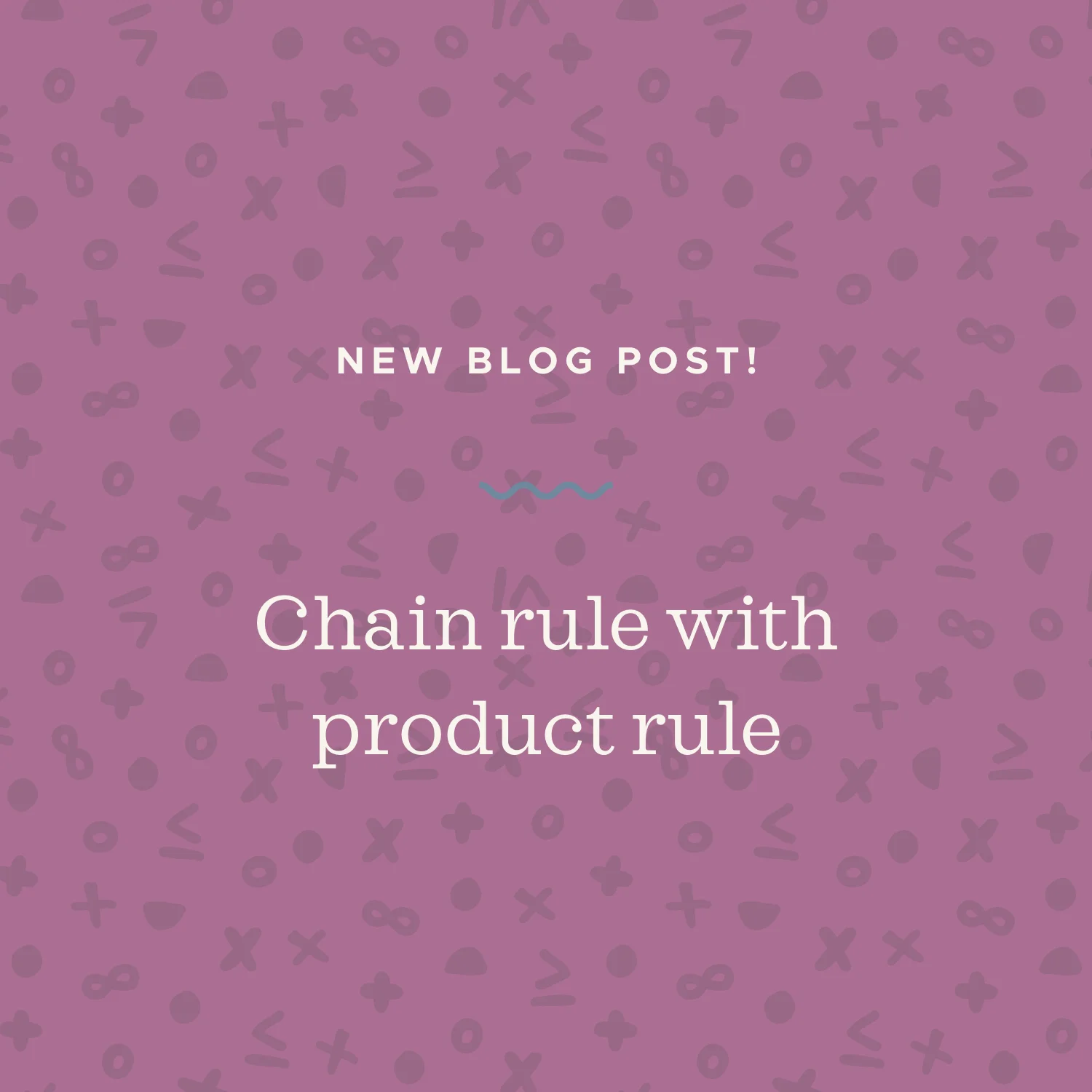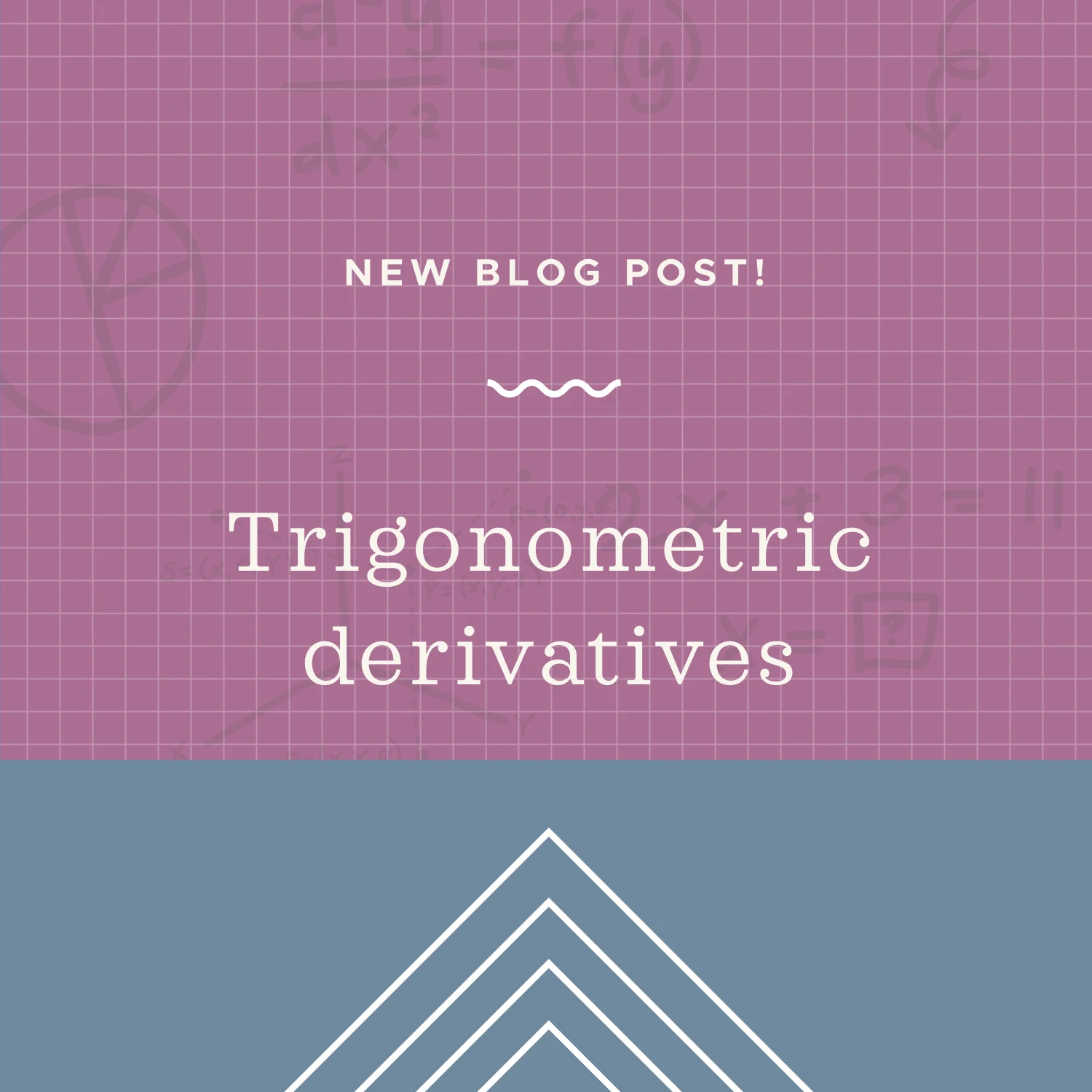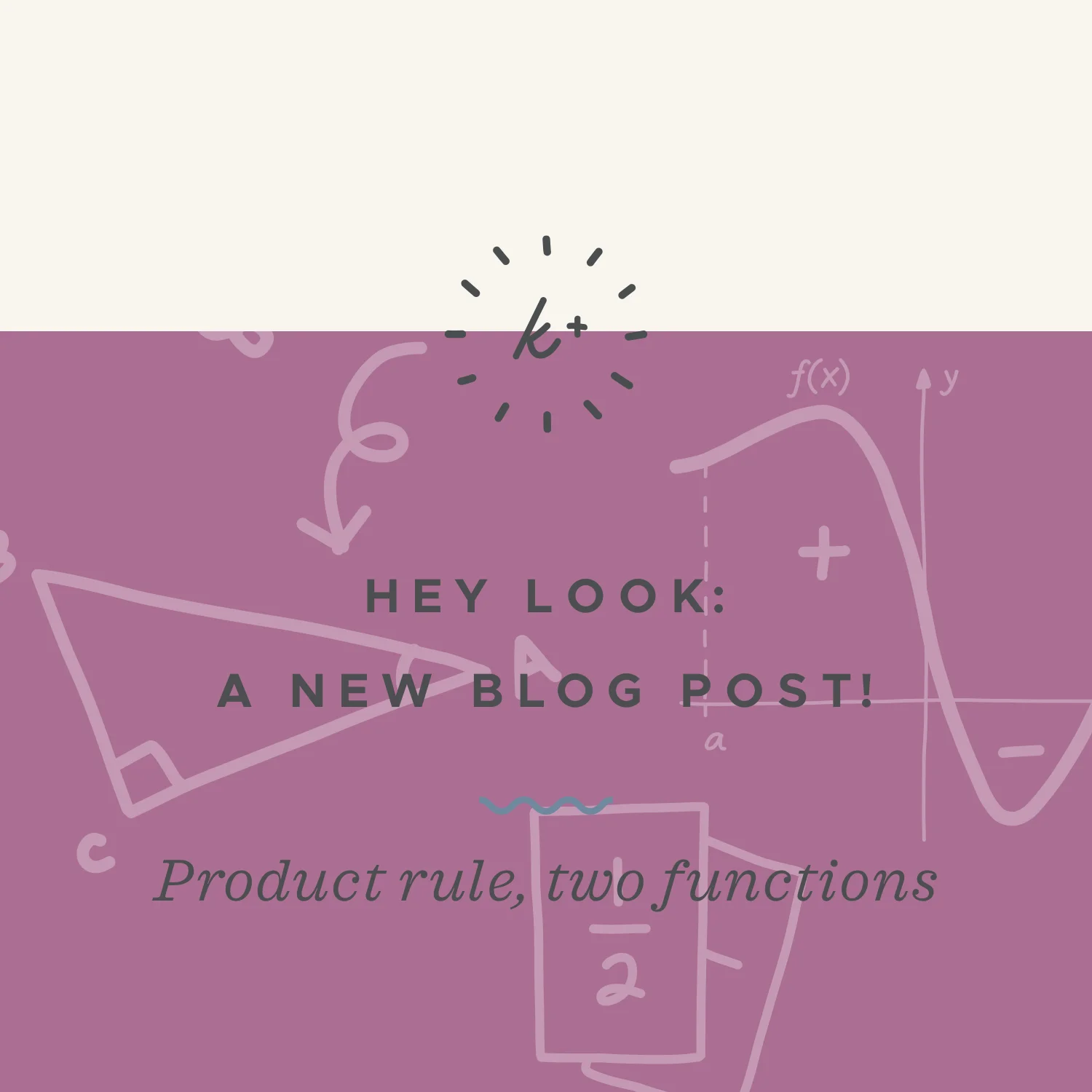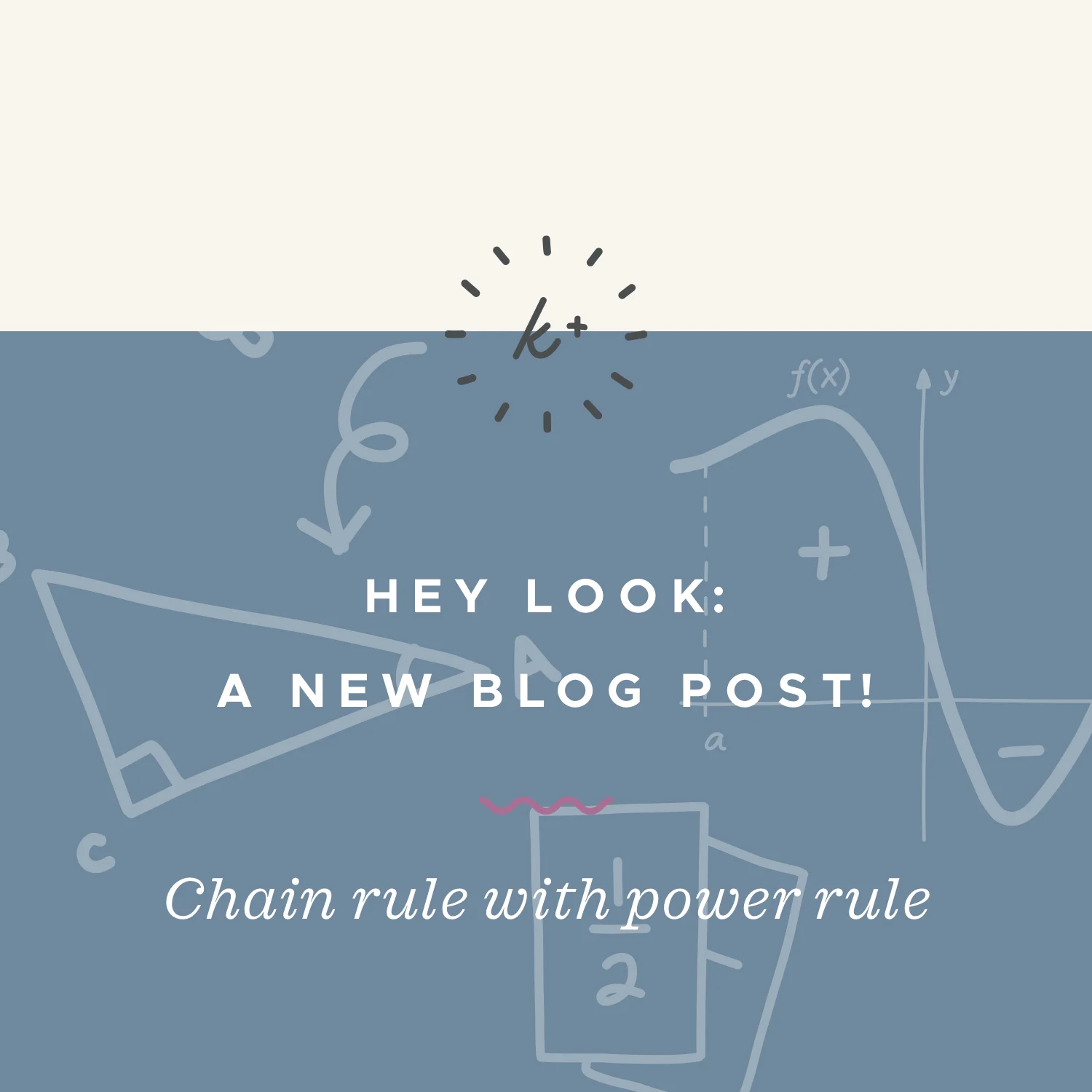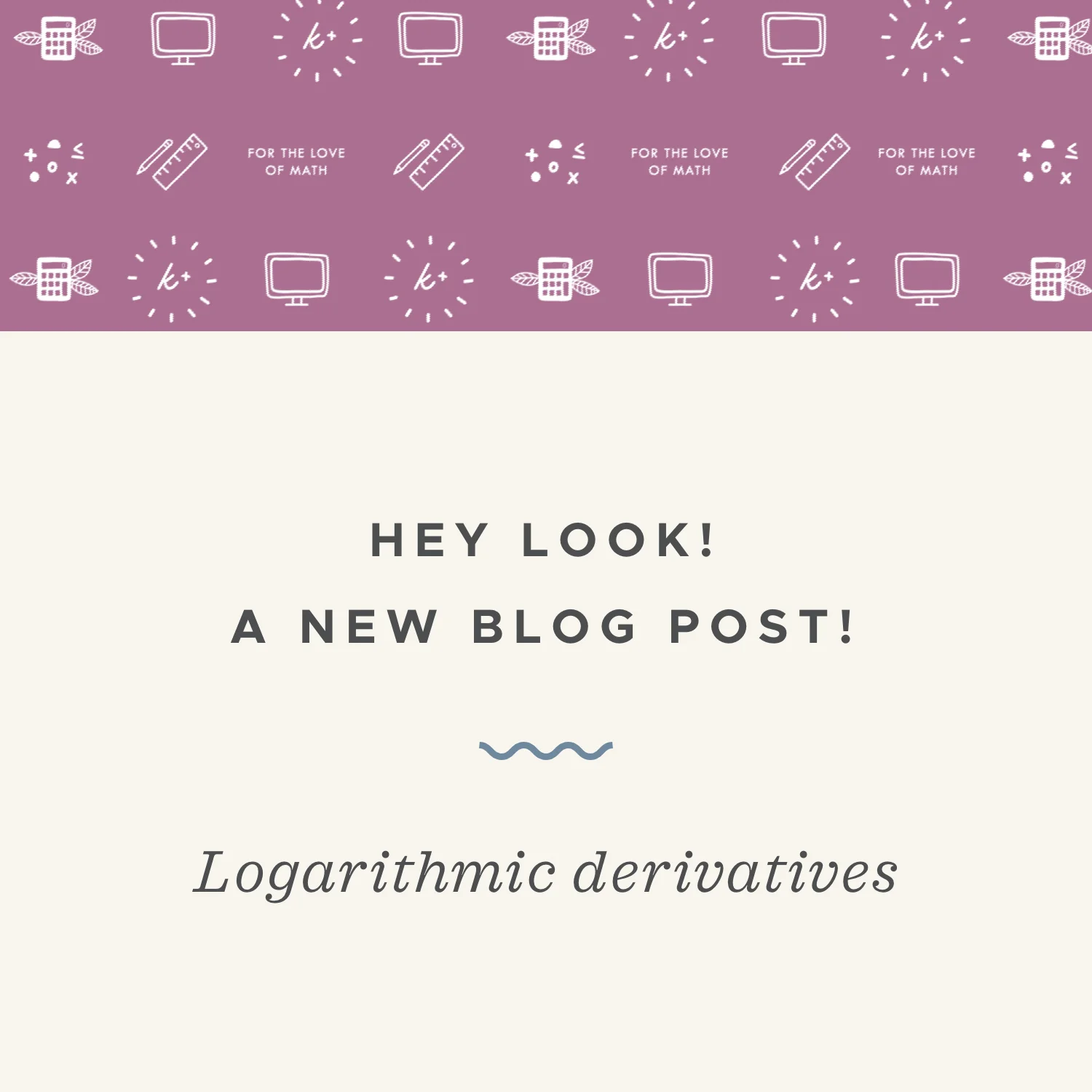It’ll be faster for us to use the derivative rules we’re about to learn. In this lesson, we’ll look at the first of those derivative rules, which is the power rule. Power rule tells us that, to take the derivative of a function like these ones, we just multiply the exponent by the coefficient, and then subtract 1 from the exponent.
Read MoreWe can tell by now that these derivative rules are very often used together. We’ve seen power rule used together with both product rule and quotient rule, and we’ve seen chain rule used with power rule. In this lesson, we want to focus on using chain rule with product rule. But these chain rule/product rule problems are going to require power rule, too.
Read MoreAt every point along a function, the function has a slope that we can calculate. If our function is a straight line, it’ll have the same slope at every point. But for any function that isn’t a straight line, the slope of the function will change as the value of the function changes. To find the slope of a function at a particular point, we can take the derivative of the function, and then evaluate it at the point we’re interested in. Doing that gives us the slope of the function at the point, but also the slope of the tangent line to the function at that point.
Read MoreGrowth and decay problems are another common application of derivatives. We actually don’t need to use derivatives in order to solve these problems, but derivatives are used to build the basic growth and decay formulas, which is why we study these applications in this part of calculus.
Read MoreWe’ve learned about the basic derivative rules, including chain rule, and now we want to shift our attention toward the derivatives of specific kinds of functions. In this section we’ll be looking at the derivatives of trigonometric functions, and later on we’ll look at the derivatives of exponential and logarithmic functions.
Read MoreWe know how to use power rule to take the derivative of a power function, and now we’ll learn how to use product rule to take the derivative of a product. In other words, when we’re given a function which is itself a product of functions, we use the product rule for derivatives in order to differentiate it.
Read MoreThe Mean Value Theorem tells us that, as long as the function is continuous (unbroken) and differentiable (smooth) everywhere inside the interval we’ve chosen, then there must be a line tangent to the curve somewhere in the interval, which is parallel to this line we’ve just drawn that connects the endpoints.
Read MoreChain rule is also often used with quotient rule. In other words, we always use the quotient rule to take the derivative of rational functions, but sometimes we’ll need to apply chain rule as well when parts of that rational function require it. Let’s look at an example of how these two derivative rules would be used together.
Read MoreFortunately, the derivatives of the hyperbolic functions are really similar to the derivatives of trig functions, so they’ll be pretty easy for us to remember. We only see a difference between the two when it comes to the derivative of cosine vs. the derivative of hyperbolic cosine.
Read MoreLinear approximation is a useful tool because it allows us to estimate values on a curved graph (difficult to calculate), using values on a line (easy to calculate) that happens to be close by. If we want to calculate the value of the curved graph at a particular point, but we don’t know the equation of the curved graph, we can draw a line that’s tangent to the curved graph at the point we’re interested in. Remember that “tangent to the graph” means that the line barely skims the graph and touches it at only one point.
Read MoreRemember that we’ll use implicit differentiation to take the first derivative, and then use implicit differentiation again to take the derivative of the first derivative to find the second derivative. Once we have an equation for the second derivative, we can always make a substitution for y, since we already found y' when we found the first derivative.
Read MoreL’Hospital’s Rule is used to get you out of sticky situations with indeterminate limit forms. If you plug in the number you’re approaching to the function for which you’re trying to find the limit and your result is one of the indeterminate forms above, you should try applying L’Hospital’s Rule.
Read MoreTo solve a related rates problem, complete the following steps: 1) Construct an equation containing all the relevant variables. 2) Differentiate the entire equation with respect to (time), before plugging in any of the values you know. 3) Plug in all the values you know, leaving only the one you’re solving for. 4) Solve for your unknown variable.
Read MoreLet’s look at how chain rule works in combination with trigonometric functions. Keep in mind that everything we’ve learned about power rule, product rule, and quotient rule still applies.
Read MoreVertical motion is any type of upwards or downwards motion that is constant. In a vertical motion problem, you may be asked about instantaneous velocity, and/or average velocity. To solve for instantaneous velocity we will need to take the derivative of our position function.
Read MoreJust as we always use the product rule when two variable expressions are multiplied, we always use the quotient rule whenever two variable expressions are divided. So to find the derivative of a quotient, we use the quotient rule.
Read MoreTo build our inverse hyperbolic functions, we need to know how to find the inverse of a function in general. To find the inverse of a function, we reverse the x and the y in the function. So for y=cosh(x), the inverse function would be x=cosh(y).
Read MoreThe chain rule is often one of the hardest concepts for calculus students to understand. It’s also one of the most important, and it’s used all the time, so make sure you don’t leave this section without a solid understanding.
Read MoreThe derivatives of base-10 logs and natural logs follow a simple derivative formula that we can use to differentiate them. With derivatives of logarithmic functions, it’s always important to apply chain rule and multiply by the derivative of the log’s argument.
Read MoreWhen a problem asks you to find the equation of the tangent line, you’ll always be asked to evaluate at the point where the tangent line intersects the graph. You’ll need to find the derivative, and evaluate at the given point.
Read More



